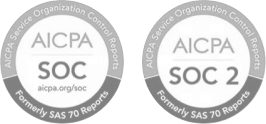Workforce Agility
Article Navigation
Definition: Workforce agility refers to the ability of a company’s employees, and the organization as a whole, to quickly adapt and respond to changes in business conditions, customer demands, technology, and market dynamics. It encompasses flexibility, resilience, adaptability, and readiness to change.
Why it matters: In an age of rapid technological disruption, global competition, and unpredictable economic shifts, organizations must be able to shift gears quickly. Workforce agility enables companies to stay competitive, reduce downtime, and respond effectively to internal and external change.
Organizational Workforce Agility
Definition: This is the macro-level application of workforce agility. It reflects how the entire organization is structured and managed to promote adaptability. It involves systems, leadership, culture, and policies that support agile behavior at every level.
Key characteristics include:
- Decentralized decision-making: Empowering teams to act quickly without excessive bureaucracy.
- Flexible structures: Allowing cross-functional teams to form and re-form based on projects or business needs.
- Culture of learning: Encouraging continuous improvement and employee development.
- Responsive leadership: Leaders who champion change and guide teams through uncertainty.
Example: An organization that regularly rotates employees through different departments to build cross-functional skills and keep operations fluid demonstrates organizational workforce agility.
Agility in the Workplace
Definition: Agility in the workplace refers to day-to-day employee behaviors, tools, and systems that enable flexibility, rapid decision-making, and collaboration. It focuses on how work gets done, rather than just what gets done.
Manifestations of workplace agility include:
- Flexible work arrangements (remote work, compressed weeks, flexible hours)
- Cloud-based collaboration tools (like Slack, Microsoft Teams, Zoom)
- Quick shift in project roles depending on business priorities
- Team autonomy and the ability to make decisions without constant top-down direction
Core Pillars of Workforce Agility
- Adaptability: The ability of employees and teams to change course in response to new information, shifting priorities, or unexpected disruptions.
- Example: A team that moves from in-person events to virtual webinars in response to a global crisis demonstrates adaptability.
- Flexibility: The willingness and ability to modify schedules, roles, or workflows to meet changing needs. Flexibility is critical for balancing organizational goals with employee preferences and well-being.
- Example: Offering flexible hours to support employee productivity across different time zones.
- Continuous Learning: In an agile workforce, learning never stops. Employees regularly acquire new skills, stay current with industry trends, and receive upskilling or reskilling opportunities.
- Tools used: eLearning platforms, mentorship programs, skill certifications, job shadowing.
- Employee Empowerment: Agile workplaces empower employees to make decisions, suggest improvements, and take ownership of their work.
- Benefits: Faster execution, innovation at all levels, and increased engagement.
- Technology Enablement: Agile workforces depend on modern tools that support real-time communication, cloud storage, project tracking, and asynchronous collaboration.
Benefits of Workforce Agility
- Improved responsiveness: Quickly seize new market opportunities or address threats.
- Increased innovation: A flexible environment encourages creative thinking and experimentation.
- Higher productivity: Agile systems eliminate bottlenecks, streamline processes, and reduce waste.
- Stronger employee engagement: Empowered and supported employees are more invested in company success.
- Enhanced customer satisfaction: Agile companies respond faster to customer feedback, creating better products and experiences.
- Better talent retention: Talented professionals prefer dynamic, flexible work environments that offer growth and purpose.
- Cost savings: Agility often leads to operational efficiency and reduced redundancy.
Challenges to Workforce Agility
Despite the benefits, workforce agility isn’t easy to implement. Challenges include:
- Resistance to change: Employees and managers may cling to familiar routines or fear job insecurity.
- Overwhelming speed: Too much change without clear direction can lead to burnout.
- Communication breakdowns: Agile teams require seamless communication, especially in remote or hybrid environments.
- Loss of structure: Without balance, agile systems can become chaotic or misaligned with company goals.
- Technology dependency: Poorly integrated tools or lack of training can stall agility rather than promote it.
Key Strategies to Promote Workforce Agility
- Foster a Growth Mindset: Encourage learning, experimentation, and continuous improvement across the organization.
- Build Cross-Functional Teams: Diversify teams with multiple skill sets that can tackle a variety of tasks and pivot quickly.
- Invest in Agile Technology: Equip teams with modern, mobile, and secure platforms for real-time collaboration and knowledge sharing.
- Encourage Transparent Leadership: Keep communication open, and involve employees in decision-making to foster trust and reduce resistance.
- Implement Feedback Loops: Regular feedback, both from employees and customers, drives innovation and quick iteration.
- Offer Flexible Work Arrangements: Allow employees to choose work hours or locations that optimize their performance and well-being.
Workforce Agility vs. Workforce Stability
- Agility focuses on responsiveness and adaptation.
- Stability focuses on consistency and long-term planning.
Agile companies must balance the two. Overemphasis on agility without structure can lead to disorganization, while too much rigidity can cause stagnation.
Conclusion
Workforce agility is no longer a “nice-to-have”; it’s a strategic necessity in today’s business environment. From frontline employees to executives, agility empowers every level of the organization to move with purpose, respond to change, and build sustainable success.































 Back
Back